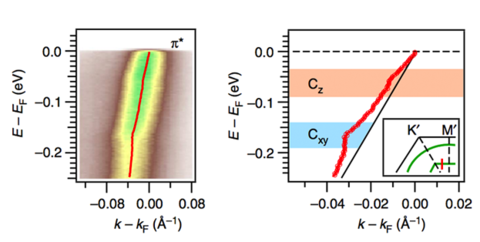Carbon-based Materials
Novel Forms of Carbon
Diamondoids: nano-scale clusters of diamond

The discovery of large quantities of higher diamondoids in petroleum provides exciting opportunities to create materials with the combined properties of diamond and nano-materials. This is a rich ground for scientific exploration and technological application. Our previous research focused on studying the unique electron emission and transport properties of diamondoids. [Read more]
Buckyballs: carbon soccer balls
Buckyballs are structures of 60 carbon atoms in a molecule that resembles the pattern on a soccer ball. They became of interest to science not only because of their unusual structural properties, but also because of the emergence of relatively high-transition temperature superconductivity upon doping the molecular crystal. We have probed the electronic band structure of C60 by ultra-high resolution angle-resolved photoelectron spectroscopy. Our work provided the first experimental evidence for a band structure on molecular crystal systems. Further efforts in succession demonstrated the importance of molecular orientation for describing both electronic structure and physical properties [1-2].
Superconducting Graphene Sheet

There is a great deal of fundamental and practical interest in the possibility of inducing superconductivity in a monolayer of graphene. While bulk graphite can be made to superconduct when certain metal atoms are intercalated between its graphene sheets, the same has not been achieved in a single layer. From ARPES measurements on the superconducting graphite intercalation compound CaC6 (Tc = 11.5 K), we were able to show the opening of a superconducting gap in the π* band and reveal a substantial contribution to the total electron–phonon-coupling strength from the π*-interlayer interband interaction. Combined with theoretical predictions, our results provide a complete account for the superconducting mechanism in graphite intercalation compounds and lend support to the idea of realizing superconducting graphene by creating an adatom superlattice [3].
Selected Publications
- J. Wu et al. Electronic structure of single crystal C60. Physica C: Superconductivity 197, 251 (1992)
- W. L. Yang et al. Band structure and Fermi surface of electron-doped C60 monolayers. Science 300, 303 (2003)
- S.-L. Yang et al. Superconducting graphene sheets in CaC6 enabled by phonon-mediated interband interactions. Nature Comm. 5, 3493 (2014)